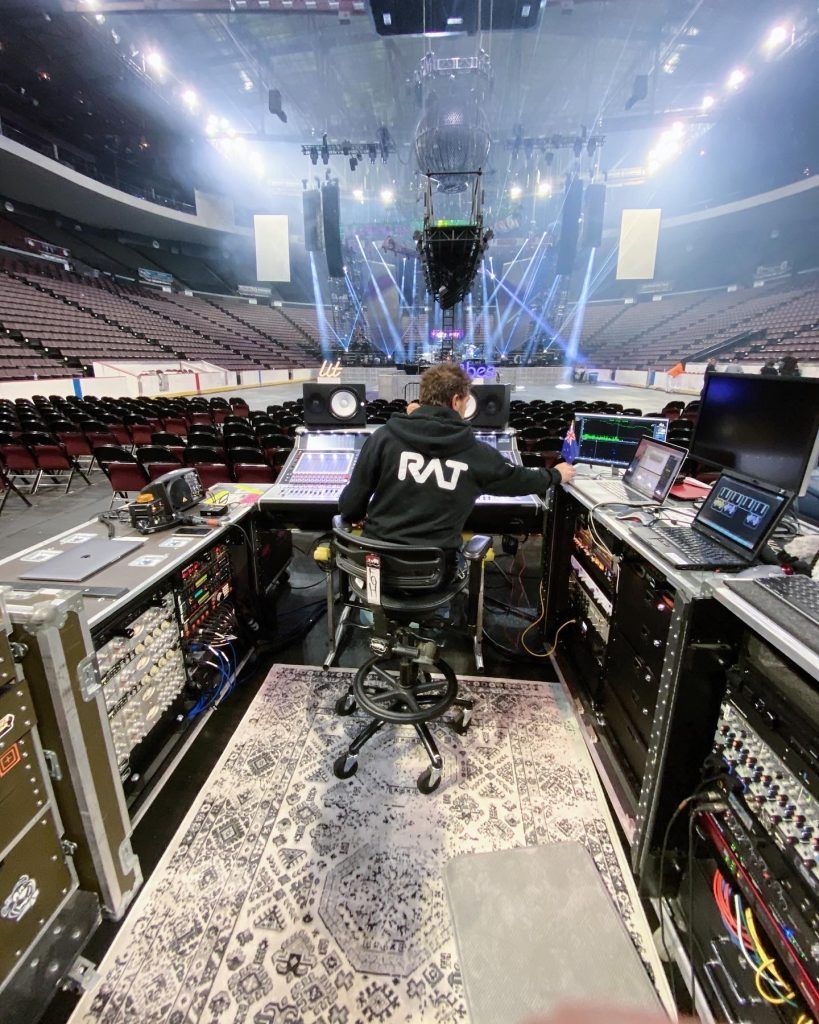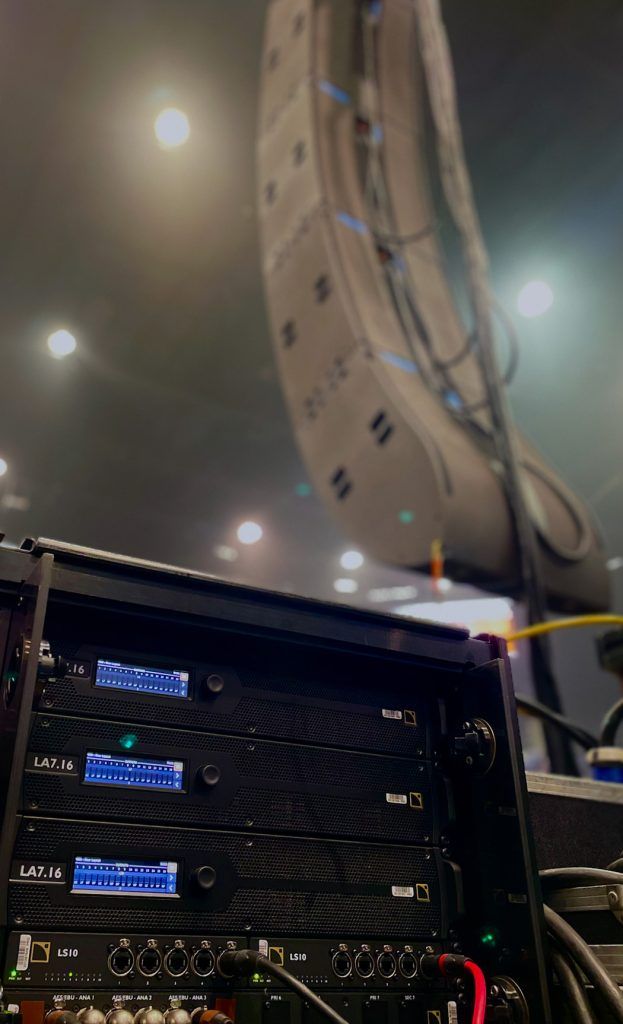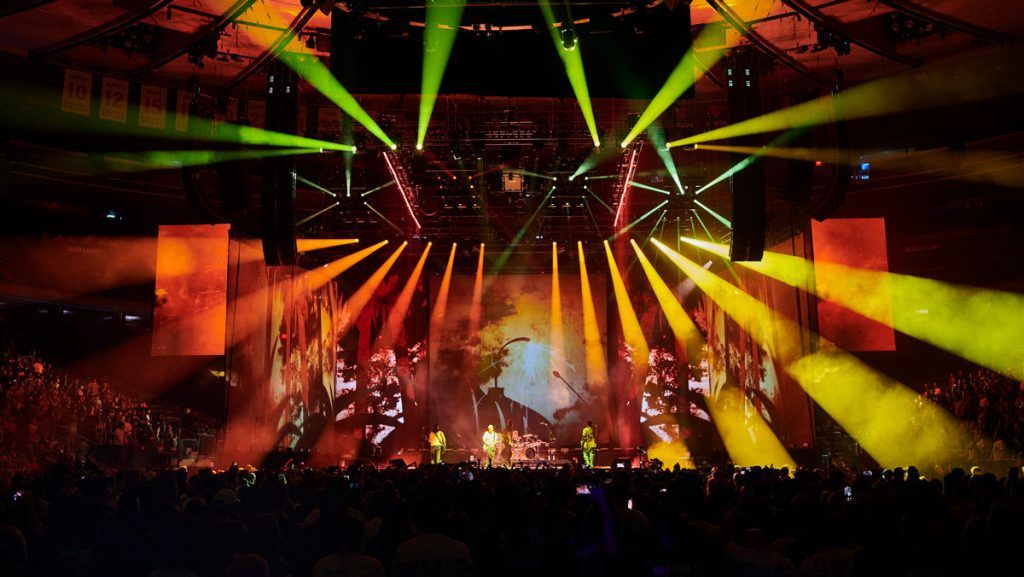What Exactly is a Concert Sound System? What Exactly is a Concert Sound System? ...
Many people often ask the question, “What exactly is a concert sound system?” And who better to answer than the company whose sole passion is to make every audio experience extraordinary?
Concerts, which have evolved over time, are held in a wide variety and sizes of settings. They can take place in private houses and small nightclubs, dedicated concert halls, amphitheaters, and parks, or in large multipurpose buildings, such as arenas and stadiums. For instance, the iconic Woodstock festival in 1969 was held in a park, while the Beatles’ concert at Shea Stadium in 1965 took place in a stadium. Indoor concerts held in the largest venues are sometimes called arena concerts or amphitheater concerts.
The history of concerts can be traced back to the late 17th century, and over the next few centuries, concerts evolved, attracting larger audiences, and classical symphonies became a rage. The post-World War II era witnessed a transformation of these events into the modern concerts we enjoy today.
Live concerts, a testament to the power of live music, are made possible by the meticulous support of professional audio equipment. In the era before recorded music, concerts were the pinnacle of musical experiences, offering a unique opportunity to hear musicians perform live.
Most people know that sound quality can make or break the experience when it comes to live performances. For sound professionals, venue managers, artists, decision-makers, and even those passionate about live sound, understanding the intricacies of a concert sound system is crucial.


Defining a Concert Sound System
A concert sound system is an assemblage of hardware, software and electronics designed to capture, mix, amplify, and reproduce sound with clarity and detail at live events. The primary goal of these systems is to ensure that the audio reaches every attendee with the same intensity and fidelity, regardless of their position in the venue. A sophisticated blend of technology and engineering meets this challenge.
Core Components of a Professional Sound System
Sound Sources
The foundation of any sound system is the sound source, which includes microphones, instruments, and other input devices. High-quality microphones and direct injection (DI) boxes are essential to capture the nuances of the audio as it originates accurately.
Mixing Consoles
Mixing consoles allow sound engineers to adjust levels, apply effects, and blend inputs into a cohesive sound output. The choice of console can significantly affect a sound system’s capabilities, with digital mixers offering extensive features for sound manipulation.
Amplifiers
Once the sound is mixed, it must be amplified and delivered to the audience through loudspeakers. Amplifiers must be powerful enough to drive the speakers at the required volume without distortion.
Speakers and Arrays
The speakers are the final output of a concert sound system, tasked with delivering clear and balanced audio across the venue. Line arrays, point source systems, and subwoofers each ensure coverage and sound quality.
Signal Processors
Signal processors such as equalizers, compressors, and limiters refine the audio signal before it reaches the audience. They ensure that the sound is dynamic and consistent, tailored to the acoustics of the venue.
Cabling and Network Systems
Efficient cabling and robust network systems are vital for connecting the myriad components of a professional sound system. Wireless systems are also increasingly prevalent, offering flexibility and reduced physical clutter.
Advanced Technologies Enhancing Concert Sound Systems
Advancements in technology continuously reshape the capabilities of concert sound systems. Spatial audio and immersive sound environments and technologies like L-ISA are becoming more desired since they provide a three-dimensional audio experience that envelops the audience. Software solutions for sound design and system tuning enable precise adjustments that can be recalibrated in real time during the event.
Challenges and Considerations
Designing a concert sound system involves more than assembling high-quality components. Acoustic considerations of the venue, audience size, and the type of performance are all critical factors. Sound Engineers must balance these elements with the system’s capabilities to achieve optimal sound distribution and quality.
Additionally, consider the environmental impact of large sound systems, including energy consumption and noise pollution. Modern systems increasingly incorporate sustainable practices and technologies to address these concerns. The L-Acoustics L Series exemplifies a more sustainable approach to sound system design by focusing on energy efficiency and material sustainability. With amplifiers that significantly reduce power consumption without compromising sound quality, the L Series utilizes advanced power supply technologies.
Why It Matters
In conclusion, a concert sound system is more than just speakers and cables; it’s a masterful blend of technology, engineering, and artistry designed to elevate the audio experience. Understanding each component’s role and how they interact is essential for crafting outstanding live audio environments. As technology continues to evolve, new tools and techniques will emerge, promising even more remarkable achievements in the field of live sound.
Every time you go to a concert or live event requiring a professional sound system, then leave feeling utterly amazed to feel this alive: it’s all thanks to this intricate technological web of sound.


FAQs
Are concert sound systems the same as professional home audio?
No, concert sound systems are designed for large venues and audiences, providing powerful, high-quality sound over long distances. They include specialized equipment for amplification, clarity, and coverage. Professional home audio systems are intended for smaller, personal spaces and focus on delivering high-fidelity sound without extensive amplification or coverage.
However, L-Acoustics does offer home integration with our installation products such as Soka, the Xi Series, and more.
Which sound systems are used in concert settings?
Concert settings typically use line array speakers for wide and even sound distribution, subwoofers for deep bass, and powerful amplifiers.
Is the sound system set up the same at every concert?
No, it varies depending on the venue size, room geometry, acoustics, and the specific requirements of the performers. Factors like indoor vs. outdoor settings, weather, specific architecture, audience size, noise spill, and the type of music all influence the configuration of the sound system.
What is a line array speaker?
A line array speaker system consists of multiple speakers arranged vertically. This configuration allows for even sound distribution over long distances, reducing sound drop-off and ensuring that both front and back audience members experience consistent audio quality.
Who controls the sound at a concert?
A sound engineer controls the sound at a concert. They operate the mixing console, adjust audio levels, balance the mix, and ensure that vocals and instruments are clear and well-balanced throughout the performance.
Do bands use the venue’s house system or bring in their own sound?
It depends. Some bands use the venue’s house system, tailored to the venue’s acoustics and size. However, many bands bring their own sound equipment to ensure consistency and quality, especially for larger tours or when they require specific sound characteristics.
What are typical sound configurations in a concert setting?
Sound configurations in concert settings often vary depending on the venue or if it’s stereo or immersive. However, a typical setup may include:
- A combination of line array speakers for wide and even sound distribution.
- Subwoofers for deep bass.
- Stage monitors for performers.
- Front-of-house (FOH) speakers for the audience.
The setup is tailored to the venue’s size and acoustics. For larger venues, delay speakers may also be included to ensure consistent sound quality throughout the audience area.
What’s the difference between stereo and immersive or spatial sound?
Stereo sound, with its two channels (left and right), creates a sense of width and direction in the audio. But iimmersive or spatial sound can elevate the listening experience. With multiple channels and advanced processing, it creates a three-dimensional audio experience. Sound comes from various directions (above, below, and around the listener), providing a more realistic and engaging listening experience.